
© T. Charles Erickson. (Click image for larger version)
Mikhail Baryshnikov / Big Dance Theater
Man in a Case
Washington, Lansburgh Theatre
5 December 2013
www.bigdancetheater.org
www.bacnyc.org
“It’s not a dance show. This is theater.” Mikhail Baryshnikov makes it crystal clear when he describes the nature of Man in a Case, a multi-media theatrical production by Big Dance Theater which premiered at Harford Stage in March and opened its 17-performance run at the Shakespeare Theater Company’s Lansburgh Theatre in Washington, D.C. in December.
Yet Washington dance aficionados will not be disappointed. This smartly-conceived and masterly-staged adaptation of Anton Chekhov’s two novellas brims with gorgeous and often unexpected choreographic ideas; and when the world’s greatest living dancer takes center stage, you can’t help but marvel at his articulated way of movement, his unique ability to convey emotion with a simple gesture or even a glance.
The way Baryshnikov moves onstage is the most striking aspect of his performance. Sixty-five years old, he is slim and energetic, with a youthful spring in his step. Despite the age, his body is an extraordinary instrument and he uses it, with remarkable facility, to telegraph feeling, ultimately creating onstage a captivating display of inspired physical theater.
Man in a Case is a collaborative effort of Baryshnikov and Annie-B Parson and Paul Lazar, co-founders of Big Dance Theater – an award-winning and internationally acclaimed company known for its signature-style interpretations of literary works.

© T. Charles Erickson. (Click image for larger version)
Having appeared in a number of theatrical productions in recent years, Baryshnikov is no stranger to the theatrical stage. When he approached the Big Dance creative team with the idea of doing a play based on Chekhov’s novella titled Man in a Case (Человек в Футляре), Parson and Lazar immediately “jumped right on it.” They adapted and directed the play, adding to the scenario another Chekhov short story, About Love (О любви).
In Chekhov’s stories, humor and sorrow go hand in hand. “Chekhov’s books are sad books for humorous people; only a reader with a sense of humor can really appreciate their sadness,” quipped Vladimir Nabokov in his “Lectures on Russian Literature.” In Man in a Case, the creators stayed true to the Chekhovian essence: they succeeded in establishing just the right balance between irony and sadness, comedy and tragedy.
The production is cleverly crafted and superbly staged. To tell the story, Parson and Lazar draw from various theatrical elements, creating a splendid fusion of dance, music, text, photography, sound and video effects.
In both parts of the play, Baryshnikov is the heart of the show. In the first part, he plays the title character, Belikov, a dorky-looking teacher of ancient Greek – a man, trapped in a self-imposed physical and emotional prison. Prudish and eccentric, he encases himself in his own claustrophobic world – a grim, solitary place where he never feels safe and happy. On the surface, his world is full of door locks, video monitors, cases and covers. Deep down, he is a prisoner of his mind, terrified of his own shadow; yet he terrorizes everyone around him with his insufferable obsession about regulations and social norms. People are afraid of him.
When an opportunity comes for him to break free from his “shell,” he is overwhelmed with uncertainty and eventually refuses to change. He falls in love but chooses not to follow his heart, giving up on his love interest, a young and vivacious Ukrainian woman named Varenka. He is scared of the unknown; he resists new possibilities. In the end, feeling ashamed and broken, he dies alone, cocooned in his coffin-like bed, to his own and everyone else’s relief.

© T. Charles Erickson. (Click image for larger version)
Dressed in a black coat, bowler hat and sporting galoshi on his feet, Baryshnikov creates a character who from the first scene commands the audience’s attention, never drifting out of focus. He is every inch the hapless Belikov, at once intimidated and intimidating.
Baryshnikov has plenty of speaking lines, which he delivers with persuasion and notable dramatic skill; and his trademark Russian accent adds authenticity to this performance. Yet his main strength here is his body language. The way he carries himself onstage is hypnotic. At the beginning of the play, he projects his character’s insecurities in his stiff walk, prim posture and angry hand gestures. The scene in Belikov’s tiny, cramped apartment is particularly telling. To get inside his room, the protagonist has to unlock six door locks. When inside, he quietly sits on a chair and then very slowly takes off his coat, hat, gloves and galoshi. He opens his wall bed, crawls inside it and closes its canopy. Each movement is carefully choreographed and executed with meticulous concentration and precision, so the whole scene evokes a series of rituals – a strange dance of sorts.
You can’t be more surprised at Belikov’s sudden transformation, when he meets the bubbly Varenka (the outstanding Tymberly Canale). At one point, as the red-cheeked Ukrainian beauty excitedly zoomed about the stage in an exhilarating folk number, the audience were holding their collective breath to see if Baryshnikov’s hero would break his “well-mannered rules” and join her on the dance floor. He didn’t. To everyone’s chagrin, Belikov’s romantic aspirations ended with a spectacular tumble down the staircase after his unsuccessful attempt to give Varenka’s brother a lesson in “proper behavior.” Emotionally ruined, Belikov left his beloved’s house to never come back. He holed up in his bed and died.
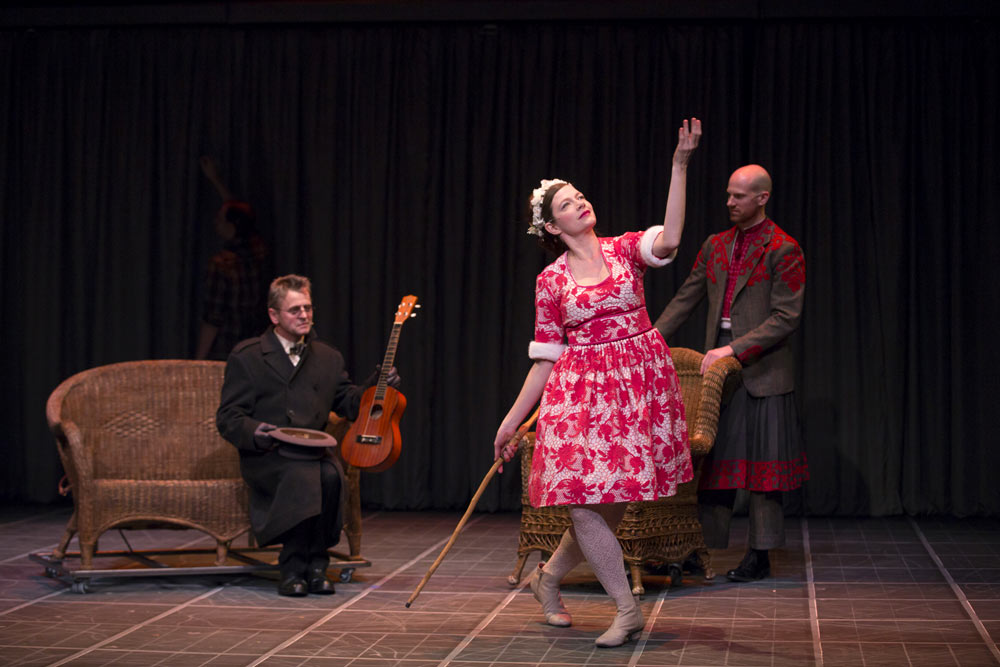
© T. Charles Erickson. (Click image for larger version)
The second part of the play is much shorter, but contains the production’s most arresting choreography. In a way, it’s an extended theatrical pas de deux between a man and a woman. The theme of unrequited love links it with the previous story. Here, Baryshnikov portrays a deeply moral man who tells the story of his unconsummated love to a married woman. Many years had passed since they parted, but he remembers the day of their farewell as if it happened just yesterday. It’s a poignant, bitter-sweet tale of a broken heart. No words need to be spoken when the hero sees his beloved for the last time. The man and the woman (again played by Tymberly Canale) dance languidly as if in trance. He touches her hands ever so slightly as they move about the stage in unison. In the final scene of the play, they continue this visually mesmerizing duet lying down on the floor, their movements projected on a big background screen. It’s a heartbreaking moment; yet for all its apparent sadness, this beautiful scene as well as the entire production feels remarkably uplifting and inspiring.







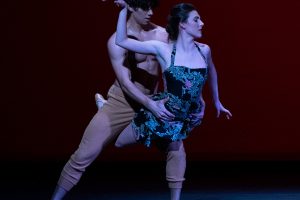
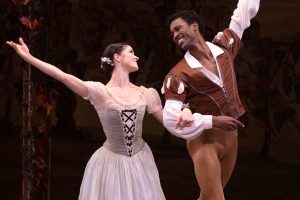


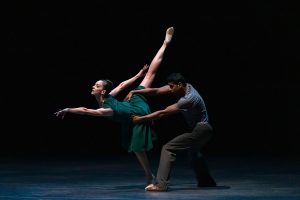
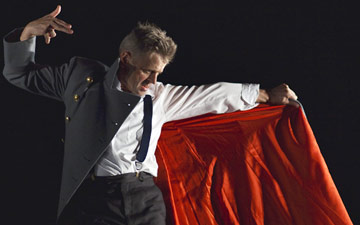



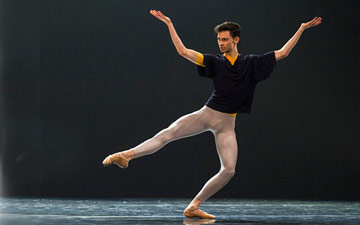
You must be logged in to post a comment.